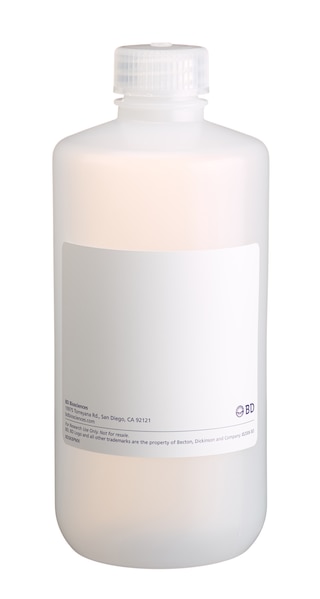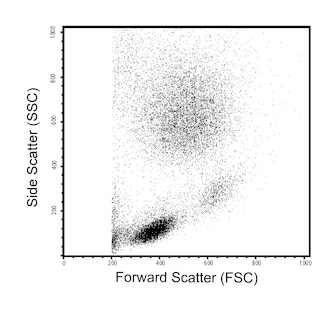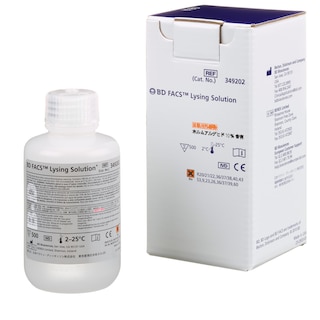Old Browser
This page has been recently translated and is available in French now.
Looks like you're visiting us from {countryName}.
Would you like to stay on the current country site or be switched to your country?




.png)

Multiparameter flow cytometric analysis using BD OptiBuild™ R718 Mouse Anti-Human CD94 (KLRD1) antibody (Cat. No. 752211) on Human peripheral blood. Flow cytometry was performed using a BD LSRFortessa™ X-20 Flow Cytometer System.

Multiparameter flow cytometric analysis using BD OptiBuild™ R718 Mouse Anti-Human CD94 antibody (Cat. No. 752211) on Human peripheral blood. Flow cytometry was performed using a BD LSRFortessa™ X-20 Flow Cytometer System.
.png)

BD OptiBuild™ R718 Mouse Anti-Human CD94 (KLRD1)

BD OptiBuild™ R718 Mouse Anti-Human CD94
.png)
Regulatory Status Legend
Any use of products other than the permitted use without the express written authorization of Becton, Dickinson and Company is strictly prohibited.
Preparation And Storage
Recommended Assay Procedures
BD® CompBeads can be used as surrogates to assess fluorescence spillover (compensation). When fluorochrome conjugated antibodies are bound to BD® CompBeads, they have spectral properties very similar to cells. However, for some fluorochromes there can be small differences in spectral emissions compared to cells, resulting in spillover values that differ when compared to biological controls. It is strongly recommended that when using a reagent for the first time, users compare the spillover on cells and BD® CompBeads to ensure that BD® CompBeads are appropriate for your specific cellular application.
Product Notices
- The production process underwent stringent testing and validation to assure that it generates a high-quality conjugate with consistent performance and specific binding activity. However, verification testing has not been performed on all conjugate lots.
- Please refer to www.bdbiosciences.com/us/s/resources for technical protocols.
- Since applications vary, each investigator should titrate the reagent to obtain optimal results.
- An isotype control should be used at the same concentration as the antibody of interest.
- Caution: Sodium azide yields highly toxic hydrazoic acid under acidic conditions. Dilute azide compounds in running water before discarding to avoid accumulation of potentially explosive deposits in plumbing.
- For fluorochrome spectra and suitable instrument settings, please refer to our Multicolor Flow Cytometry web page at www.bdbiosciences.com/colors.
- Human donor specific background has been observed in relation to the presence of anti-polyethylene glycol (PEG) antibodies, developed as a result of certain vaccines containing PEG, including some COVID-19 vaccines. We recommend use of BD Horizon Brilliant™ Stain Buffer in your experiments to help mitigate potential background. For more information visit https://www.bdbiosciences.com/en-us/support/product-notices.
- Please refer to http://regdocs.bd.com to access safety data sheets (SDS).
- This product is provided under an Agreement between BIOTIUM and BD Biosciences. This product, and only in the amount purchased by buyer, may be used solely for buyer’s own internal research, in a manner consistent with the accompanying product literature. No other right to use, sell or otherwise transfer (a) this product, or (b) its components is hereby granted expressly, by implication or by estoppel. This product is for research use only. Diagnostic uses require a separate license from Biotium, Inc. For information on purchasing a license to this product including for purposes other than research, contact Biotium, Inc., 3159 Corporate Place, Hayward, CA 94545, Tel: (510) 265-1027. Fax: (510) 265-1352. Email: btinfo@biotium.com.
- Alexa Fluor™ is a trademark of Life Technologies Corporation.
- For U.S. patents that may apply, see bd.com/patents.
Companion Products





.png?imwidth=320)
The HP-3D9 monoclonal antibody specifically binds to CD94 which is also known as KP43. CD94 is expressed on the cell surface as a ~70 kDa, disulfide-linked, type II transmembrane glycoprotein dimer. It is encoded by KLRD1 (Killer cell lectin like receptor D1) which belongs to the C-type lectin superfamily. CD94 is expressed on natural killer (NK) cells, especially activated NK cells. It is also expressed on γ/δ TCR+ T lymphocytes, NK-T cells, and on some CD8+CD56+ α/β TCR+ cells. CD94 associates with various NKG2 receptors to form receptors for HLA class I molecules and plays a role in regulating cellular adhesion and activation. The HP-3D9 antibody can reportedly inhibit the cytolytic activity of activated NK cells.

Development References (3)
-
Aramburu J, Balboa MA, Ramírez A, et al. A novel functional cell surface dimer (Kp43) expressed by natural killer cells and T cell receptor-gamma/delta+ T lymphocytes. I. Inhibition of the IL-2-dependent proliferation by anti-Kp43 monoclonal antibody. J Immunol. 1990; 144(8):3238-3247. (Immunogen: Flow cytometry, Immunoprecipitation, Inhibition). View Reference
-
Balboa MA, Balsinde J, Aramburu J, Mollinedo F, López-Botet M. Phospholipase D activation in human natural killer cells through the Kp43 and CD16 surface antigens takes place by different mechanisms. Involvement of the phospholipase D pathway in tumor necrosis factor alpha synthesis. J Exp Med. 1992; 176(1):9-17. (Clone-specific: Stimulation). View Reference
-
Pérez-Villar JJ, Melero I, Rodríguez A, et al. Functional ambivalence of the Kp43 (CD94) NK cell-associated surface antigen. J Immunol. 1995; 154(11):5779-5788. (Clone-specific: Inhibition, Stimulation). View Reference
Please refer to Support Documents for Quality Certificates
Global - Refer to manufacturer's instructions for use and related User Manuals and Technical data sheets before using this products as described
Comparisons, where applicable, are made against older BD Technology, manual methods or are general performance claims. Comparisons are not made against non-BD technologies, unless otherwise noted.
For Research Use Only. Not for use in diagnostic or therapeutic procedures.
Report a Site Issue
This form is intended to help us improve our website experience. For other support, please visit our Contact Us page.